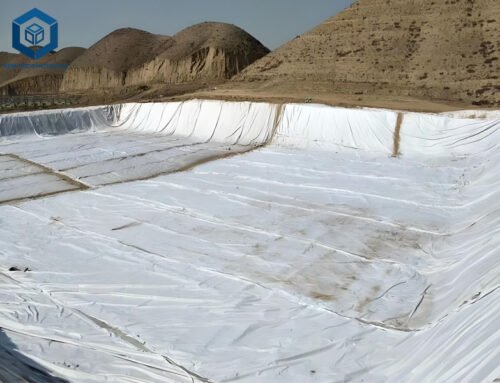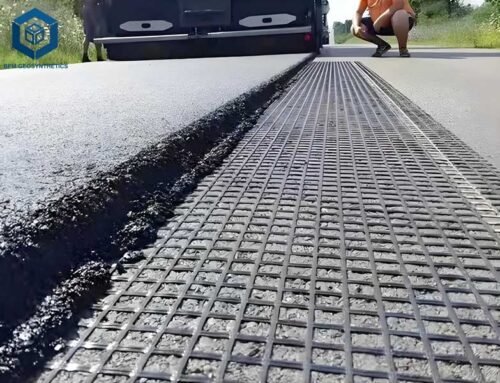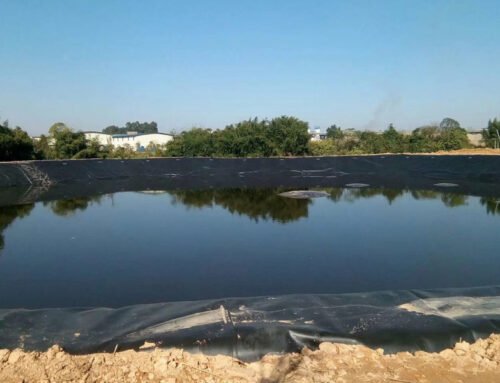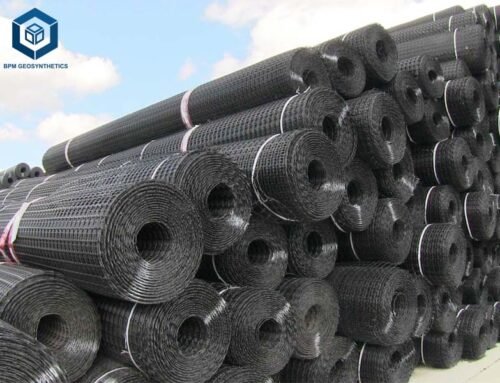Creating a 1-acre pond for aquaculture, irrigation, or recreational purposes requires a reliable, impermeable liner to prevent water loss and ensure environmental safety. Pond liners, specifically geomembranes, are critical geosynthetic materials used to retain water, protect soil, and maintain aquatic ecosystems. A common question for farmers, landowners, and contractors is, “How much does a 1 acre pond liner cost?” This comprehensive guide explores the cost structure, material types, specifications, installation requirements, regional pricing variations, and market trends for a 1-acre pond liner. By providing data-driven insights, we aim to help you make informed decisions for your pond project while optimizing your budget.
1. Understanding Pond Liners
Pond liners are synthetic or natural membranes designed to create a waterproof barrier, preventing seepage in porous soils like sand or gravel, which can lose 50–80% of water within 48 hours. For a 1-acre pond (43,560 square feet), liners ensure water retention, support fish and plant life, reduce maintenance costs, and enhance property value by up to 15%. Common materials include high-density polyethylene (HDPE), linear low-density polyethylene (LLDPE), ethylene propylene diene monomer (EPDM), reinforced polyethylene (RPE), and polyvinyl chloride (PVC), each suited to specific applications based on durability, flexibility, and environmental safety.
Key Applications of 1-Acre Pond Liners
- Aquaculture: Support fish farming with fish-safe liners like HDPE or EPDM.
- Irrigation Ponds: Store water for agricultural use, requiring durable, UV-resistant materials.
- Recreational Ponds: Enhance aesthetics for fishing or swimming, using flexible liners like LLDPE or EPDM.
- Stormwater Retention: Manage runoff in urban or industrial settings with chemical-resistant liners.
- Wildlife Ponds: Create habitats for aquatic species, prioritizing non-toxic, long-lasting materials.
Benefits of Pond Liners
- Water Retention: Achieve 95% water retention with geomembranes (permeability <10⁻¹² cm/s per ASTM D5887).
- Durability: Lifespans of 20–100 years, depending on material and maintenance.
- Environmental Safety: Non-toxic liners (e.g., HDPE, EPDM) ensure fish and plant safety.
- Cost-Effectiveness: Reduce maintenance costs by 20–30% compared to concrete or clay.
- Flexibility: Conform to irregular pond shapes, minimizing seams and leaks by 15%.
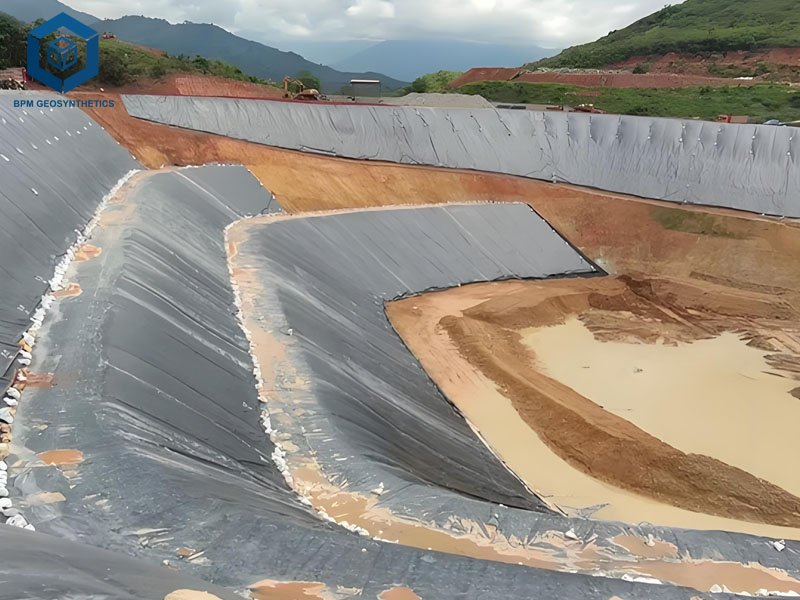
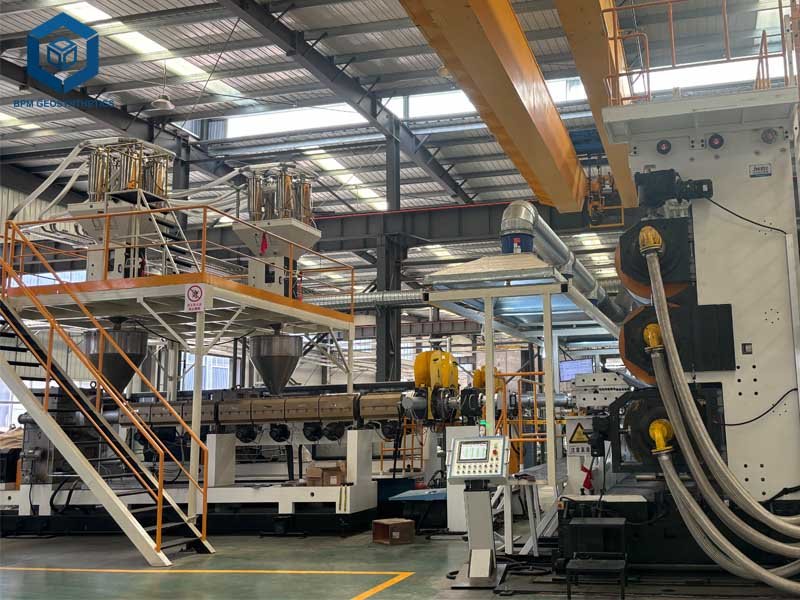
2. Factors Influencing 1 Acre Pond Liner Cost
The cost of a 1-acre pond liner varies based on material type, thickness, project size, installation complexity, and regional factors. Below, we analyze these factors with precise data to clarify pricing for a 43,560-square-foot pond.
2.1 1 Acre Pond Liner Cost – Material Type
The choice of material significantly impacts cost and suitability:
- High-Density Polyethylene (HDPE): Offers high tensile strength (20–40 kN/m per ASTM D6693) and chemical resistance, costing $0.14–$0.62 per square foot. Ideal for aquaculture and irrigation due to a 20–60-year lifespan.
- Linear Low-Density Polyethylene (LLDPE): Flexible for irregular shapes, priced at $0.25–$0.60 per square foot. Suitable for recreational ponds with a 20–30-year lifespan.
- Ethylene Propylene Diene Monomer (EPDM): Fish-safe and UV-resistant, costing $0.50–$2.00 per square foot. Preferred for koi ponds due to 300% stretchability and 20–30-year lifespan.
- Reinforced Polyethylene (RPE): Lightweight with 2–3x puncture resistance vs. HDPE, costing $0.40–$0.90 per square foot. Ideal for large ponds, with a 20–40-year lifespan.
- Polyvinyl Chloride (PVC): Budget-friendly at $0.10–$0.65 per square foot, but less durable (5–15 years) and not always fish-safe unless certified.
- Bentonite Clay: Eco-friendly, costing $0.50–$3.00 per square foot, requiring 2–5 lbs per square foot. Suitable for natural ponds but needs skilled installation.
For a 1-acre pond, material costs range from $4,356–$27,000 (HDPE) to $21,780–$87,120 (EPDM).
2.2 1 Acre Pond Liner Cost – Thickness and Durability
Thickness, measured in millimeters or mils (1 mm = 39.37 mil), affects durability and cost:
- 5 mm (20 mil): Costs $0.14–$0.62 per square foot, suitable for low-pressure aquaculture ponds (4–6 ft deep). Puncture resistance: 1–2 kN (ASTM D4833).
- 75–1.0 mm (30–40 mil): Costs $0.40–$0.90 per square foot, ideal for irrigation ponds with moderate stress. Tensile strength: 20–40 kN/m.
- 5 mm (60 mil): Costs $0.80–$1.20 per square foot, used for high-pressure applications like stormwater retention. Lifespan: 40–60 years.
Thicker liners increase costs by 10–20% but extend lifespan by 20–30%, reducing annual costs. For example, a 0.5 mm HDPE liner at $0.62 per square foot costs $0.03 annually over 20 years, while a 1.5 mm liner at $1.20 costs $0.02 over 60 years.
2.3 1 Acre Pond Liner Cost – Size and Overlap
A 1-acre pond (43,560 square feet) requires additional liner material for depth and overlap:
- Formula: Liner Length = Pond Length + (2 × Max Depth) + 10 ft overlap; Liner Width = Pond Width + (2 × Max Depth) + 10 ft overlap.
- Example: A 1-acre pond (208 ft x 208 ft, 4 ft deep) needs a liner of 226 ft x 226 ft (51,076 square feet), adding 17% to material costs. At $0.62 per square foot (HDPE), the cost is $31,667.
2.4 1 Acre Pond Liner Cost – Installation Complexity
Installation costs for a 1-acre pond range from $0.20–$1.50 per square foot ($8,712–$65,340), driven by:
- Site Preparation: Clearing rocks, roots, and vegetation costs $0.10–$0.30 per square foot. Land clearing for 1 acre costs $1,500–$3,000.
- Geotextile Underlay: Non-woven geotextile ($0.25–$0.40 per square foot) protects against punctures, adding $10,890–$17,424 for 1 acre.
- Welding: Hot wedge or extrusion welding for HDPE/LLDPE costs $0.30–$0.75 per square foot, ensuring seamless joints.
- Labor: Skilled labor ($30–$50/hour in North America, $10–$20/hour in Asia) accounts for 20–50% of installation costs.
Total installation costs for a 1-acre pond range from $8,712–$65,340.
2.5 1 Acre Pond Liner Cost – Additives and Certifications
- UV Resistance: Carbon black additives (≥2%) add $0.05–$0.10 per square foot, extending lifespan by 10–20 years.
- Fish Safety: NSF-61-certified liners (e.g., HDPE, EPDM) ensure aquatic safety, adding 5–10% to costs.
- Chemical Resistance: Enhanced formulations for stormwater or industrial ponds add $0.05–$0.15 per square foot.
2.6 1 Acre Pond Liner Cost – Regional and Supplier Variations
Reputable suppliers like BPM Geosynthetics, Solmax, and Western Environmental Liner charge $0.50–$2.00 per square foot due to certifications (e.g., GRI-GM13, ISO 9001:2015) and warranties (up to 20 years). Lesser-known suppliers offer liners at $0.10–$0.40 per square foot but may lack quality assurance.
3. Regional Pricing for 1-Acre Pond Liners
Pricing varies globally due to manufacturing, labor, and shipping costs. Below are regional insights for a 1-acre pond (43,560 square feet).
Prices in Kenya
In Kenya, pond liners are popular for aquaculture and irrigation:
- 5 mm HDPE: KSh 230–300 per square meter ($0.18–$0.23 per square foot). Total: KSh 10,018,800–$13,068,000 ($77,068–$100,523).
- Installation: KSh 100–150 per square meter ($0.08–$0.12 per square foot). Total: KSh 4,356,000–6,534,000 ($33,508–$50,262).
- Geotextile Underlay: KSh 150 per square meter ($0.12 per square foot). Total: KSh 6,534,000 ($50,262).
Total cost: KSh 20,908,800–26,952,000 ($160,837–$207,323).
Global Price Ranges
- United States: $0.14–$0.62 per square foot for 0.5–1.0 mm HDPE, totaling $6,098–$27,007 for materials. Installation adds $8,712–$65,340.
- India: ₹70–150 per square meter ($0.08–$0.18 per square foot), totaling $3,485–$7,841. Low manufacturing costs drive affordability.
- China: $0.15–$0.70 per square foot, totaling $6,534–$30,492, due to efficient supply chains and labor rates ($2–$5/hour).
- Australia: $0.50–$1.20 per square foot, totaling $21,780–$52,272, reflecting remote installation challenges.
4. Specifications and Parameters for 1 Acre Pond Liners
Selecting the right liner for a 1-acre pond requires evaluating technical specifications:
4.1 Material Properties
- HDPE: Tensile strength of 20–40 kN/m, puncture resistance of 1–2 kN, density of 0.94 g/cm³. Ideal for aquaculture and irrigation.
- LLDPE: 400 N tensile strength, flexible for irregular shapes, UV-resistant.
- EPDM: 300% elongation, UV-stable (–40°F to 175°F), fish-safe.
- RPE: 2–3x puncture resistance vs. HDPE, lightweight (0.2 kg/m²), 5-layer technology.
- PVC: 380% elongation, less durable, requires soil cover for UV protection.
- Bentonite Clay: Natural, puncture-resistant, requires 2–5 lbs per square foot.
4.2 Thickness Suitability
- 5 mm (20 mil): Low-pressure ponds (4–6 ft deep), 10–20-year lifespan.
- 75–1.0 mm (30–40 mil): Medium-pressure ponds (6–10 ft deep), 20–40 years.
- 5 mm (60 mil): High-pressure or industrial ponds, 40–60 years.
4.3 Seaming and Testing
- Welding: Hot wedge welding (0.15–0.2 MPa) for HDPE/LLDPE ensures 95% seam strength. Cost: $0.30–$0.75 per square foot.
- Testing: Vacuum testing (0.005 MPa for 30 seconds) verifies leak-proof seams.
4.4 Geotextile Underlay
Non-woven geotextile (400–600 g/m², $0.25–$0.40 per square foot) enhances puncture resistance by 30%, costing $10,890–$17,424 for 1 acre.
4.5 Environmental Resistance
- UV Stability: Carbon black (≥2%) ensures 20–100-year durability.
- Chemical Resistance: HDPE resists ammonia and fertilizers, critical for aquaculture.
5. Installation Process and Costs for a 1-Acre Pond
Proper installation is critical to maximize liner lifespan. Below is a step-by-step guide:
5.1 Site Preparation
- Clearing: Remove rocks, roots, and debris ($0.10–$0.30 per square foot, $4,356–$13,068 for 1 acre).
- Excavation: Dig to 4–10 ft with 3:1 slopes, costing $1.50–$4.00 per cubic yard ($65,340–$174,240 for 1 acre at 4 ft deep).
- Geotextile Underlay: Lay a protective layer to prevent punctures ($10,890–$17,424).
5.2 Liner Placement
- Unrolling: Unroll the liner carefully to avoid creasing or stretching.
- Fitting: Conform to pond contours, ensuring 10 ft overlap.
5.3 Seaming and Testing
- Welding: Use hot wedge or extrusion welders for HDPE/LLDPE ($0.30–$0.75 per square foot, $13,068–$32,670).
- Testing: Conduct vacuum or inflation tests to ensure seam integrity.
5.4 Securing and Finishing
- Anchoring: Tuck edges into a 1 ft deep trench and cover with soil.
- Protection: Add rocks or plants to conceal edges ($1–$15 per square foot, $43,560–$653,400).
Total installation costs for a 1-acre pond range from $8,712–$65,340, excluding excavation and landscaping.
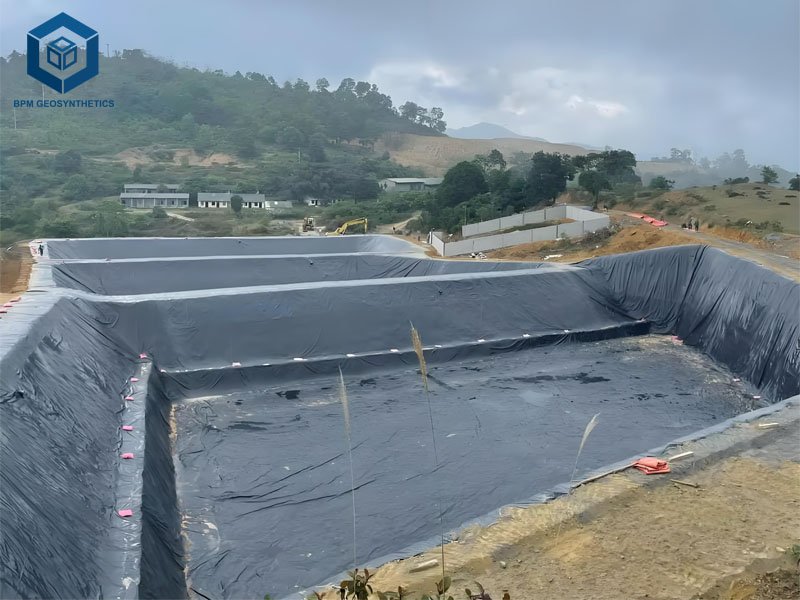
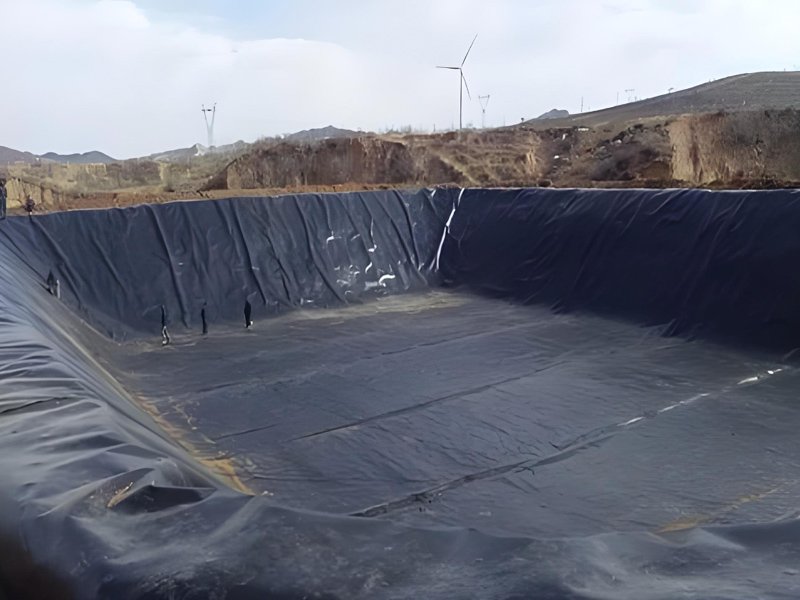
6. Case Study: 1 Acre Aquaculture Pond in Thailand
A Kenyan fish farmer builds a 1-acre tilapia pond using a 0.5 mm HDPE liner:
- Material Cost: KSh 250 per square meter x 4,047 m² = KSh 1,011,750 ($7,783).
- Installation Cost: KSh 120 per square meter x 4,047 m² = KSh 485,640 ($3,736).
- Geotextile Underlay: KSh 150 per square meter x 4,047 m² = KSh 607,050 ($4,670).
- Excavation: $65,340 (4 ft deep, $1.50 per cubic yard).
- Total Cost: KSh 2,104,440 + $65,340 = ~$77,189.
This investment supports sustainable fish farming, increasing yields by 20–30% annually.
7. Conclusion
The cost of a 1-acre pond liner ranges from $4,356–$87,120 for materials, with installation adding $8,712–$65,340, depending on material (HDPE: $6,098–$27,007), thickness, and regional factors. HDPE and RPE offer cost-effective durability, while EPDM is ideal for fish-safe applications. By understanding these factors and leveraging bulk discounts, proper installation, and maintenance, you can optimize your budget for a durable, leak-free pond. Contact suppliers like BPM Geosynthetics for custom quotes and expert guidance.

